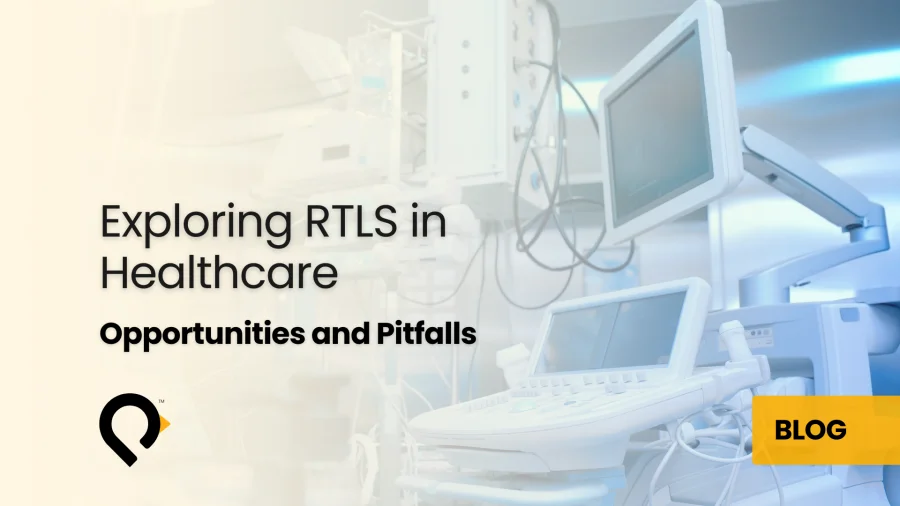
RTLS in Healthcare: Bridging Promise and Reality
Introduction
The landscape of healthcare technology is continuously evolving. Specifically, Real-Time Location Systems (RTLS) are positioned at the forefront of this digital healthcare transformation. Moreover, prominent consultants in the RTLS marketplace have long predicted substantial growth. In fact, they envision these healthcare tracking systems as pivotal tools in enhancing operational efficiency, medical asset management, and patient care delivery in hospitals and healthcare facilities. However, despite these optimistic projections, the reality of RTLS deployments often tells a different story. Unfortunately, it is marked by a trail of unsuccessful healthcare technology implementations.
The Promise of RTLS in Healthcare Innovation
RTLS technology promises to streamline hospital operations. Specifically, it provides real-time data on the whereabouts and status of medical equipment, healthcare staff, and patients. Consequently, this location tracking capability can lead to improved asset utilization, decreased equipment losses, enhanced patient safety, and more efficient clinical workflows. For instance, knowing the exact location of a critical piece of medical equipment can drastically reduce the time spent searching for it. Therefore, this speeds up the delivery of patient care and improves clinical efficiency.
Moreover, RTLS solutions can play a crucial role infection control. This is particularly important in the post-pandemic era. Specifically, they track interactions and ensure that healthcare environments are properly sanitized. Additionally, the healthcare data gathered can be used to optimize the flow of patients and healthcare staff. As a result, this reduces bottlenecks and improves the overall healthcare experience and patient outcomes.
The Reality of Failed RTLS Deployments
Despite the clear benefits, the RTLS market in healthcare has been fraught with challenges. Unfortunately, these challenges are primarily due to failed healthcare technology deployments. Furthermore, these implementation failures often stem from several key issues:
1. Complex Healthcare IT Integration
First and foremost, integrating RTLS systems with existing hospital IT infrastructure can be complex and costly. In fact, many healthcare facilities underestimate the scale and scope of the effort required for healthcare system integration.
2. Poor Healthcare Technology Scalability
Second, RTLS solutions that work well in a controlled pilot setting may not scale effectively across a larger hospital system. Consequently, this leads to performance issues and unmet expectations in healthcare operations.
3. Healthcare Staff Resistance
Third, adoption of new healthcare technologies can meet resistance from hospital staff and healthcare workers. This is particularly true if the benefits are not immediately apparent. Moreover, resistance increases if the new system disrupts established clinical workflows and healthcare processes.
4. Inadequate RTLS Vendor Support
Finally, some RTLS vendors may not provide adequate support and maintenance post-deployment. As a result, this leads to operational challenges that hospitals are ill-equipped to manage on their own. Consequently, it affects healthcare service delivery.
Bridging the Gap: RTLS Implementation Best Practices
To reconcile the promise of RTLS technology with the reality of its implementation, several healthcare technology strategies can be employed:
-
Comprehensive Healthcare Needs Assessment
First, healthcare organizations should conduct thorough needs assessments. Therefore, this ensures that the chosen RTLS solution aligns closely with their operational goals and healthcare IT infrastructure.
-
Strategic Pilot Testing
Second, implementing pilot programs in selected hospital departments can help identify potential issues. Thus, these issues can be addressed before a full-scale healthcare technology rollout.
-
Healthcare Staff Training and Engagement
Third, engaging hospital staff early in the process is crucial. Additionally, providing comprehensive healthcare technology training can facilitate smoother adoption and system integration.
-
Choosing the Right RTLS Partners
Moreover, partnering with reputable RTLS vendors is essential. Specifically, these vendors should offer robust technical support and have a proven track record of successful healthcare implementations. Therefore, this is crucial for project success.
-
Phased Implementation Approach
Furthermore, adopting a phased approach to RTLS deployment allows for gradual system optimization. Consequently, this enables better workflow integration across healthcare facilities.
Healthcare Technology ROI and Performance Metrics
Successful RTLS implementations require clear performance indicators and ROI measurement in healthcare settings. Specifically, key metrics include asset utilization rates, equipment search time reduction, staff productivity improvements, and patient care delivery enhancements. Moreover, healthcare analytics derived from RTLS data can provide valuable insights. Therefore, these insights support operational optimization and cost reduction in hospital management.
Conclusion: Future of RTLS in Healthcare
In summary, the RTLS marketplace in healthcare continues to offer substantial opportunities for transforming hospital operations and healthcare delivery. However, realizing this potential requires a careful approach. Specifically, this approach must address the technical, operational, and human factors involved in RTLS deployments. Furthermore, by learning from past implementation failures and planning meticulously for future healthcare technology implementations, healthcare facilities can harness the full power of RTLS solutions. As a result, they can create more efficient, safe, and patient-centric environments.
Ultimately, the future success of RTLS in healthcare depends on several critical factors. These include strategic planning, proper vendor selection, comprehensive staff training, and continuous system optimization. Therefore, with the right approach, real-time location systems can deliver transformational benefits for healthcare organizations. Consequently, this improves both operational efficiency and patient care quality.




